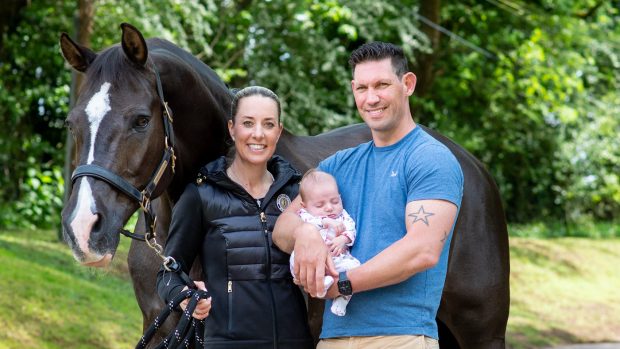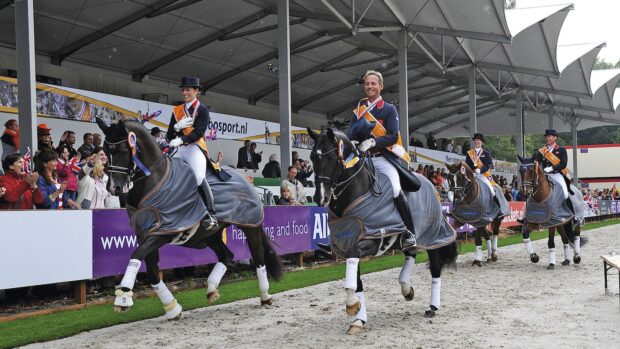Extensive lobbying has defeated plans for five 71m turbines on land next to dressage rider Jill Reynolds’ farm in Otterham, North Cornwall.
A packed Cornwall County Council meeting heard the application by Powergen Renewable refused by 17 votes to nine. Among the reasons given were that the site is adjacent to a designated area of outstanding natural beauty.
Jill moved to the area two years ago and is currently bringing on a home-bred three year old by Donnersong out of her national championship mare Sunny, and a six-year-old by Anky van Grunsven’s Trakehner Olympic Partout. She also has a racehorse broodmare in foal.
“We have a Grade II listed farmhouse with plenty of restrictions on what could and could not be done and Ihad to go through an extensive planning process to get the yard and arena set up,” said Jill.
The windfarm application, which it was hoped would provide enough renewable energy for 3,000 homes, was approved by the planning committee for NorthCornwall District Council before going to the full council on Monday night (20 January 2003).
This was despite support of Jill’s objections from David Holmes, chief executive of British Dressage and the submission of an article in Horse &Hound involving German Olympic dressage trainer Klaus Balkenhol. He had to move when training his horses became impossible and nobody wanted their horses at his yard after a windfarm was erected next door.
In his letter David Holmes said: “I understand on the information supplied by Mrs J Reynolds that the proposed wind turbines will be in extremely close proximity to her stable yard, schooling arena and paddocks, which surround her house.” “Mrs Reynolds feels that the closeness of the turbines will cause a hazard to her ability to train her horses.
“Both the sound and the sight of the wind turbines could potentially cause her horses to startle and bolt. In particular with young horses this is the case and if such a thing were to happen the consequences could be very serious,” he wrote.
Jill added her own concerns: “The turbines are near to the only bridleway in the area and next to the road I ride down. I don’t feel that my concerns about the effect on the horses have been properly taken into consideration.”
Mary Weston, the British Horse Society Access Officer also expressed concern about the proximity of the turbines. “We recommend a minimum distance between the base of a turbine and the nearest equestrian route of 200 metres.”
After the hearing Jill said: “I’m delighted at the outcome and I’m grateful for all the support from everyone.”



